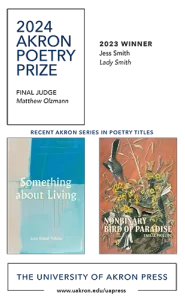NANO Fiction – 2011
Volume 5 Number 1
Fall 2011
Biannual
Aimee Nicole
This edition of Nano Fiction was intriguing from the bright cover art to the flash fiction that jolts you along like a wooden roller coaster. The artist behind the front and back covers, Jason Poland, includes an artist statement and comic strip in the shape of honeycombs titled “The Sting and the Sweet.” In his statement, Poland explains how he took up beekeeping in 2008 and learned that each queen bee seeks to kill her sister queens. She who survives, reigns; however, in his comic strip, he shows two sister queens seemingly joining forces but remaining in diplomatic battle for queendom. On the covers, the queen sisters are holding hands and have a gothic essence about them, especially in their facial makeup and markings. The images are quite stunning, but only through following the comic strip does the real story begin to unfold.
This edition of Nano Fiction was intriguing from the bright cover art to the flash fiction that jolts you along like a wooden roller coaster. The artist behind the front and back covers, Jason Poland, includes an artist statement and comic strip in the shape of honeycombs titled “The Sting and the Sweet.” In his statement, Poland explains how he took up beekeeping in 2008 and learned that each queen bee seeks to kill her sister queens. She who survives, reigns; however, in his comic strip, he shows two sister queens seemingly joining forces but remaining in diplomatic battle for queendom. On the covers, the queen sisters are holding hands and have a gothic essence about them, especially in their facial makeup and markings. The images are quite stunning, but only through following the comic strip does the real story begin to unfold.
But of course, onto the writing itself. The flash fiction pieces range from a paragraph of several lines to just over a page. Nothing drags on and merely flashes useless bits of scenery and description. The beauty of flash fiction is certainly the ability to tell an entire story with brevity and sincerity. But still, the meat and potatoes, so to speak, the characters and the plot, must still be forces to be reckoned with if a successful story is to be told. And this issue of Nano Fiction does not disappoint. Though there are named finalists and a winner of the 2011 fiction prize, I would like to present what I believe to be the most poignant pieces that shook me to the very core.
Chantel Tattoli crafts a beautiful piece from the point of view of maids at an upscale hotel. It begins: “The other maids tuck and dream, while they pick up M&M wrappers and thongs. Dreaming when they leave what will never be enough towels, not even here, where the thread count is very high. The other maids, they hope. One day when it’s least expected one of these business-men will be La One.” Everyone seems to be dreaming for a way out while the work minutes tick by, but these women are dreaming of a better life. Gloria goes to bed with a wealthy guest, but when it doesn’t work out, she does not lose hope. Instead, she says, “He just wasn’t La One.” Drina, another maid, takes pleasure in the “devastation” of empty bottles and belongings left behind. The final sentence has a resounding, hollow sound: “The rooms are lives people walk out on every day.”
Some stories left lingering thoughts behind that I found myself being reminded of for days after reading. Christopher Citro’s story “No, I will not be your Girlfriend” discusses the mirror-like setup of the human body. Everything is either centered (nose, bellybutton, mouth) or placed evenly on each side (arms, legs, nipples). Except the heart, he points out. Apparently when the heart was smack in the middle of our rib cage, it was at a “structural weak point.” After evolution, the heart now lies securely and safely on the left side of our chest. Citro writes: “It illustrates the innate ability of the human heart to get out of the way of danger.”
Miah Arnold presents us with a bone rattling story about a woman who starts collecting teeth in “How She Rathered.” She steals these teeth from under countless pillows, filling a sack in less than one hour. Finally, “At home, when she emptied its contents into her tub, they nearly filled it. Without the salivic gleam of their usual context the teeth looked like kernels of bathtub.” She fills the bathtub and lays down in the teeth, submerging herself in them. Finally, she swishes the “loose teeth between her own teeth.” You have to read the story to discover the end, but I could not help but be haunted by the woman who swims in loose teeth as a way she discovered “to be something less upsetting than a woman.”
Finally, I will leave you with Jessica Young’s story titled “Dreams.” To this narrator, the typically scary dreams are “the familiar ones”—not, for example, about big, scary reptiles or having to land an airplane. Rather, the real, scary dreams are “the ones where it is dark, but nothing happens. The ones where I eat every piece of food I can find and still feel hungry.” There is a void. An emptiness. Something inescapable: “I try to run, and I do, but in slow motion, as if my body is encased in honey.”
[nanofiction.org]




